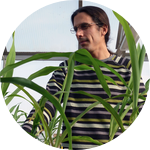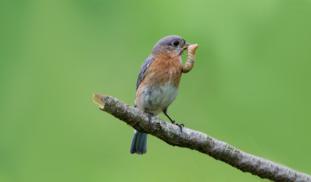Please wait...
About This Project
We all know that birds have a great vision, right?
But what if they could also smell?!
We demonstrated that foraging birds exploit volatiles emitted from crop plants damaged by insects. This knowledge opens new avenues in using birds in sustainable insect pest management.
We are expanding this project to determine which bird species respond to these cues agricultural, forest and wetland environments.
More Lab Notes From This Project

Browse Other Projects on Experiment
Related Projects
How do polar bears stay healthy on the world's worst diet?
Polar bears survive almost entirely on seal fat. Yet unlike humans who eat high-fat diets, polar bears never...
Uncovering hidden insect diversity associated with a likely undescribed gall-forming midge
Does a likely undescribed species of gall-forming midge (pers. comm. Ray Gagné) on Eriodictyon plants (Yerba...
Macrofungi of the California archipelago
The eight islands of the California Archipelago are a well-studied biodiversity hotspot — but we know almost...




